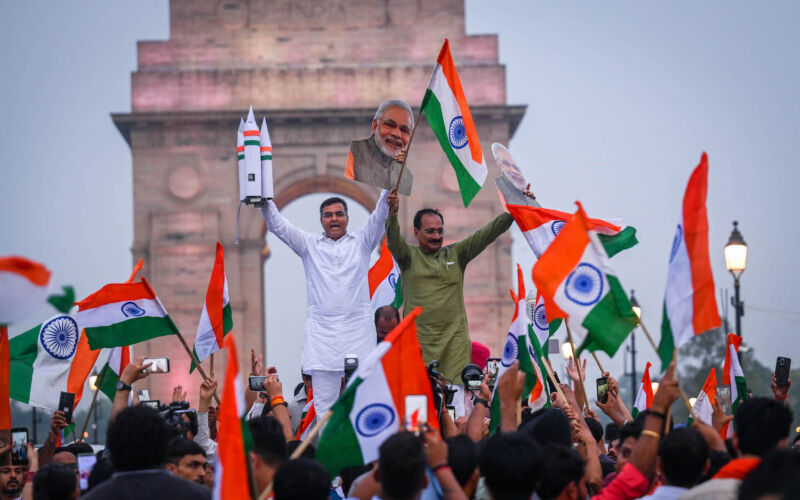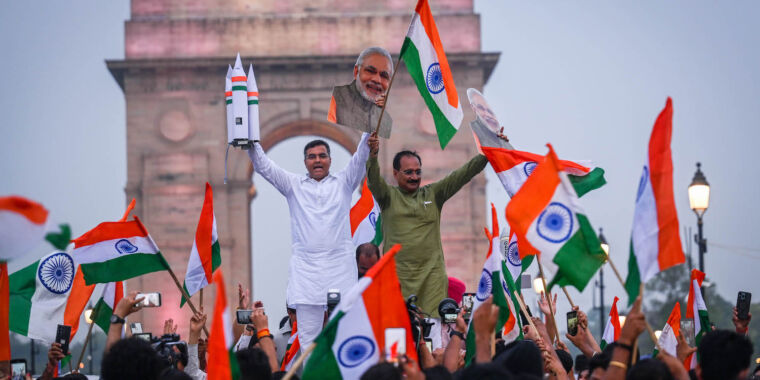
The Indian government has approved plans in one go to develop a new reusable rocket, the centerpiece of an Indian space station, a robotic mission to return samples to the moon and a scientific probe to explore Venus.
“Great news for the space sector!” Indian Prime Minister Narendra Modi posted on X. Collectively, the projects approved by the Indian cabinet are estimated to cost $2.7 billion. The bulk of the funding will go toward the country’s space station and a reusable launch vehicle.
If the projects achieve their goals, the approvals Modi announced Wednesday will put India on track to become the third-largest space power by the 2030s, after the United States and China. V. Narayanan, director of India's Liquid Propulsion Systems Center, said that was the goal in a recent presentation, writing that India's space initiatives would catapult the country to a place “among the world's top three space powers.”
This suggests that India is aiming to outpace Russia’s space program, which is largely in financial crisis due to the country’s war with Ukraine. Russia still has a reliable crew capsule, the Soyuz, and will maintain a robust crewed space program as long as the International Space Station remains in orbit. But there are serious questions about whether the Russian government can support a standalone national space station, a replacement for the Soyuz crew spacecraft, or a reusable heavy-lift rocket.
Aim high
If India succeeds with its space station and reusable rocket, and continues to make progress in lunar and interplanetary exploration, there is reason to believe that the South Asian superpower will do more in space than Russia in the next 15 years. Europe and Japan are also doing a lot in space, but they do not have independent human space programs and their governments have not yet taken the step to significantly support the development of a reusable rocket.
India aims to become the fourth country to send its astronauts into orbit next year with the Gaganyaan space program. Modi announced in 2018 that India’s Gaganyaan spacecraft would launch astronauts into space in 2022, but the schedule has been pushed back three years, with a crew flight now scheduled for late 2025. Even if that schedule is pushed back again, India is almost certain to be the next country to join the human spaceflight club. No other space agency is making a serious attempt in this area.
Last year, India became the fourth country to land a spacecraft on the moon with the Chandrayaan 3 mission. The lander deployed a small rover to drive across the lunar surface and send back the first detailed measurements of the composition of the soil at the moon’s south pole. Chandrayaan 3’s landing also set the record for the largest audience for a live event on YouTube, with 8 million users tuning in as the spacecraft made its final descent.
Perhaps that statistic isn’t surprising for such a historic event in the world’s most populous country. Modi, India’s nationalist prime minister since 2014, has closely associated himself with India’s successes in space and used them as a source of national pride. The landing of Chandrayaan 3 on the moon sparked flag-waving celebrations across India.
“The entire experience was nothing short of a fairy tale,” said Pawan Goenka, chairman of the Indian National Space Promotion and Authorization Center, a government agency that acts as an intermediary between India's space agency and the private sector. “The entire country was in a celebratory mood, the likes of which I have never seen when India beat Pakistan in a cricket match.”
India has been frugal in pursuing its space achievements, including an independent regional navigation satellite network and a growing military space sector. Chandrayaan 3 cost the Indian government less than $100 million, a fraction of the cost of a similar mission managed by NASA.
ISRO has received about $13 billion in funding over the past decade, making it the eighth largest in the world in terms of government investment, according to Steve Bochinger of the space consultancy Novaspace.
Indian officials know that the country's achievements in space, particularly the landing of Chandrayaan 3, set the bar high for future missions, despite economic difficulties, extreme income disparities and limited higher education opportunities.
“The success of Chandrayaan 3 symbolises the new India, poised to make its mark in the global space sector,” Goenka said on India's National Space Day on August 23. “And this success has put India's space technology capabilities in the global spotlight. It has also raised the expectations of our countrymen and the world from India's space industry.”

